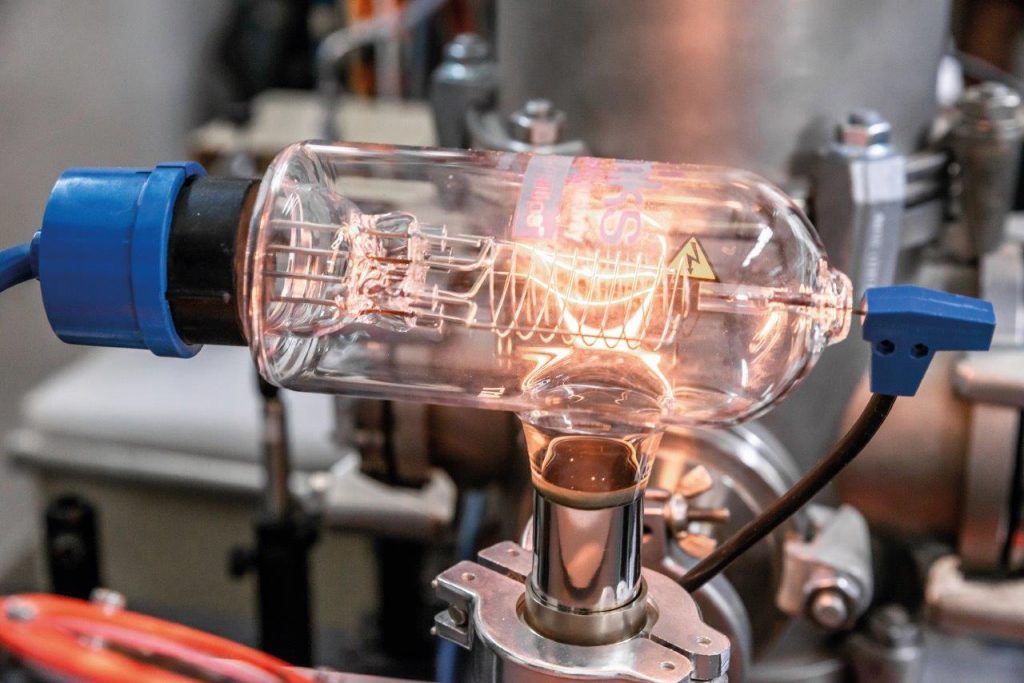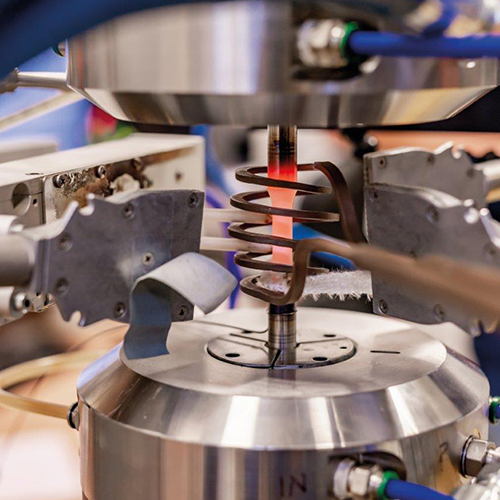In the regular meetings of the TT Actual discussion platform, transferors and representatives of individual institutes of the Czech Academy of Sciences are looking for new ways to get research results outside academic laboratories. To make them more visible, a database of technologies and devices was launched in early March on the new Transfer Portal of the Academy of Sciences of the Czech Republic.
TT Actual, a transfer discussion platform, has recently focused on the efficient use of the free capacity of the Academy of Sciences’ instruments and laboratories. The idea was initiated by Jan Řídký, Vice President of the Academy of Sciences of the Czech Republic, with the idea that not only other institutes of the Academy of Sciences of the Czech Republic, but also external entities could benefit from the rich instrumentation of the laboratories.
Ilona Müllerová, Vice-Chair of the Czech Academy of Sciences and former Director of the Academic Council, who is responsible for technology and knowledge transfer, has a similar view of this issue. In her opinion, the offer of free capacity of instrumentation or entire laboratories to other departments of the Academy of Sciences, or even to external interested parties for their scientific and research activities is extremely important: “Some instruments are expensive and their purchase price is in the tens of millions of crowns. However, the development of these instruments is progressing rapidly and their limiting parameters are surpassed within a few years. After about ten or fifteen years, some parts are no longer serviced. It is therefore desirable to make the most of the instruments from the outset.”
As far as the purely commercial use of the instruments is concerned, according to Ilona Müllerová, former director of the Institute of Instrumentation Technology of the CAS, it is important to be cautious, because the instruments are primarily acquired for scientific tasks and projects and the achievement of the outputs is timed in the projects: “Corporate contracts are also important, but in their case there may be a conflict of interest due to time priorities. It is also important to remember that with such complex equipment, much of the work is in the description and interpretation of the results. Routine repeat measurements should only really be carried out when there is spare capacity, both in terms of instrumentation and personnel.”
Radka Šmídová from the Centre for Technology Transfer of the CAS explains that CeTTAV wants to add application laboratories to the database in addition to instruments, which have been missing so far, and is taking the necessary steps to do so: “We help departments interested in publishing results or instruments in the database with product sheets and answer questions related to the database’s function. We welcome their opinions and comments. They help us to think about further improvements and directions.”
Ilona Müllerová adds that the database administrator must actively contact individual workplaces and find out who is interested in offering their services. “Most institutes have a list of instruments and diagnostic methods on their websites, including contact persons. Unfortunately, the information is not always up-to-date and easy to find,” she points out.
The current situation in the transfer workplaces is heterogeneous. The governance and management of the use of instrument capacity or the conditions and delivery of the service vary. In some places, only partner institutions or affiliated departments are lent out, while larger institutes have service departments that offer a mostly comprehensive service. For example, the Institute of Physics of the CAS maintains its own database of experimental equipment on its website.

In the future, the CETTAV aims to create a comprehensive and clear database on the CAS Transfer Portal for all institutes that can offer transferable results and capacities of instruments and laboratories. As it was mentioned at the TT Actual online meeting, the database should mainly offer instruments and laboratories that can be perceived as the result of research work or are part of it, as well as instruments that are unique, new, not available on the market or their use is associated with a new method of measurement, data interpretation, etc. That is to say, such instruments, the making available of which can be included in knowledge and technology transfer activities.
The Technology and Instruments Database contains results from all three disciplines – including the humanities and social sciences. Recently, for example, a product list from the Oriental Institute of the CAS has been added, namely the first online Tibetan dictionary expanded with the Czech language. “In the case of the social sciences and humanities, we have seen keen interest, probably because until now these institutes have stood outside the mainstream of transfer efforts. We are considering creating a specific workshop on the basics and principles of transfer for this field of science,” adds Radka Šmídová.
Clear catalogue
As far as the technical aspect is concerned, the Transfer Portal of the CAS is ready to take on this task. The database can be searched according to various criteria – by individual department or scientific field, as well as by the nature of the service or device. Each result or service is described in detail in separate product sheets, there is also information on the possibilities of commercial use, the names of expert guarantors and a contact form where you can send a question or a specific request directly to the person responsible from the department.
“I think it is a good idea to start a database of instruments and laboratories, it is a huge task that will not be finished in a week. I appreciate the fact that the Technology Transfer Centre has taken the lead,” says Jiří Trnka from the J. Heyrovský Institute of Physical Chemistry of the CAS, which offers technology for gentle cleaning of the surfaces of historical materials, such as medieval oil paintings.
Experts, especially from the first and second scientific fields, agree that the impetus for the presentation of instruments and laboratories must be sent by the management of the Academy of Sciences of the Czech Republic through the directors of the institutes. So far, 22 institutes of the Academy of Sciences of the Czech Republic have participated in the activities of the Transfer Portal of the CAS, and the database so far includes thirty product lists.
“The instrumentation of the workplaces is changing quite rapidly, including staffing. It is therefore important to keep this information up to date. There is certainly a lot to do with a well-maintained database. However, it is certainly worthwhile, not only in terms of the use of instruments but also in establishing new collaborations. From the point of view of the competitiveness of our science, it is better to have one top instrument and use it 100% than several mediocre ones. The management of the Academy of Sciences will certainly support these activities.” Ilona Müllerová, Vice-President of the Academy of Sciences of the Czech Republic.
Photo: Jana Plavec, Division of External Relations of the CAS




